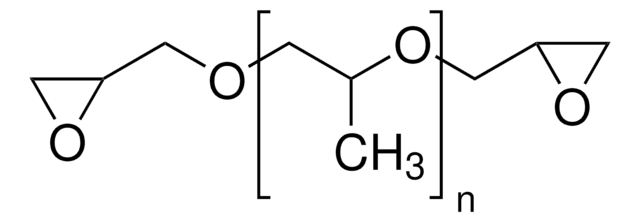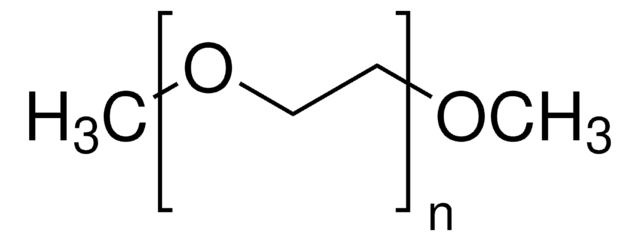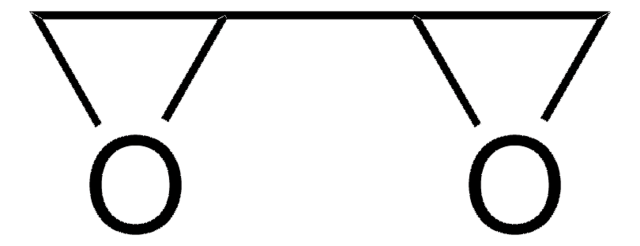475696
Poly(ethylene glycol) diglycidyl ether
average MN 500, cross-linking reagent amine reactive, glycidyl
Synonym(s):
Polyethylene glycol, Diepoxy PEG, PEG diglycidyl ether, Polyoxyethylene bis(glycidyl ether)
About This Item
Recommended Products
product name
Poly(ethylene glycol) diglycidyl ether, average Mn 500
mol wt
average Mn 500
Quality Level
reaction suitability
reagent type: cross-linking reagent
reactivity: amine reactive
refractive index
n20/D 1.47
Ω-end
epoxy
α-end
epoxy
polymer architecture
shape: linear
functionality: homobifunctional
storage temp.
2-8°C
InChI
1S/C8H14O4/c1(9-3-7-5-11-7)2-10-4-8-6-12-8/h7-8H,1-6H2
InChI key
AOBIOSPNXBMOAT-UHFFFAOYSA-N
Looking for similar products? Visit Product Comparison Guide
Related Categories
General description
Application
related product
Storage Class Code
10 - Combustible liquids
WGK
WGK 3
Flash Point(F)
386.6 °F - closed cup
Flash Point(C)
197.00 °C - closed cup
Personal Protective Equipment
Regulatory Listings
Regulatory Listings are mainly provided for chemical products. Only limited information can be provided here for non-chemical products. No entry means none of the components are listed. It is the user’s obligation to ensure the safe and legal use of the product.
FSL
Group 4: Flammable liquids
Type 3 petroleums
Hazardous rank III
Water insoluble liquid
JAN Code
475696-500ML:
475696-VAR:
475696-BULK:
475696-100ML:
Choose from one of the most recent versions:
Already Own This Product?
Find documentation for the products that you have recently purchased in the Document Library.
Customers Also Viewed
Articles
Patterning of PEG-based Hydrogels - Engineering Spatial Complexity
Devising biomaterial scaffolds that are capable of recapitulating critical aspects of the complex extracellular nature of living tissues in a threedimensional (3D) fashion is a challenging requirement in the field of tissue engineering and regenerative medicine.
Our team of scientists has experience in all areas of research including Life Science, Material Science, Chemical Synthesis, Chromatography, Analytical and many others.
Contact Technical Service





